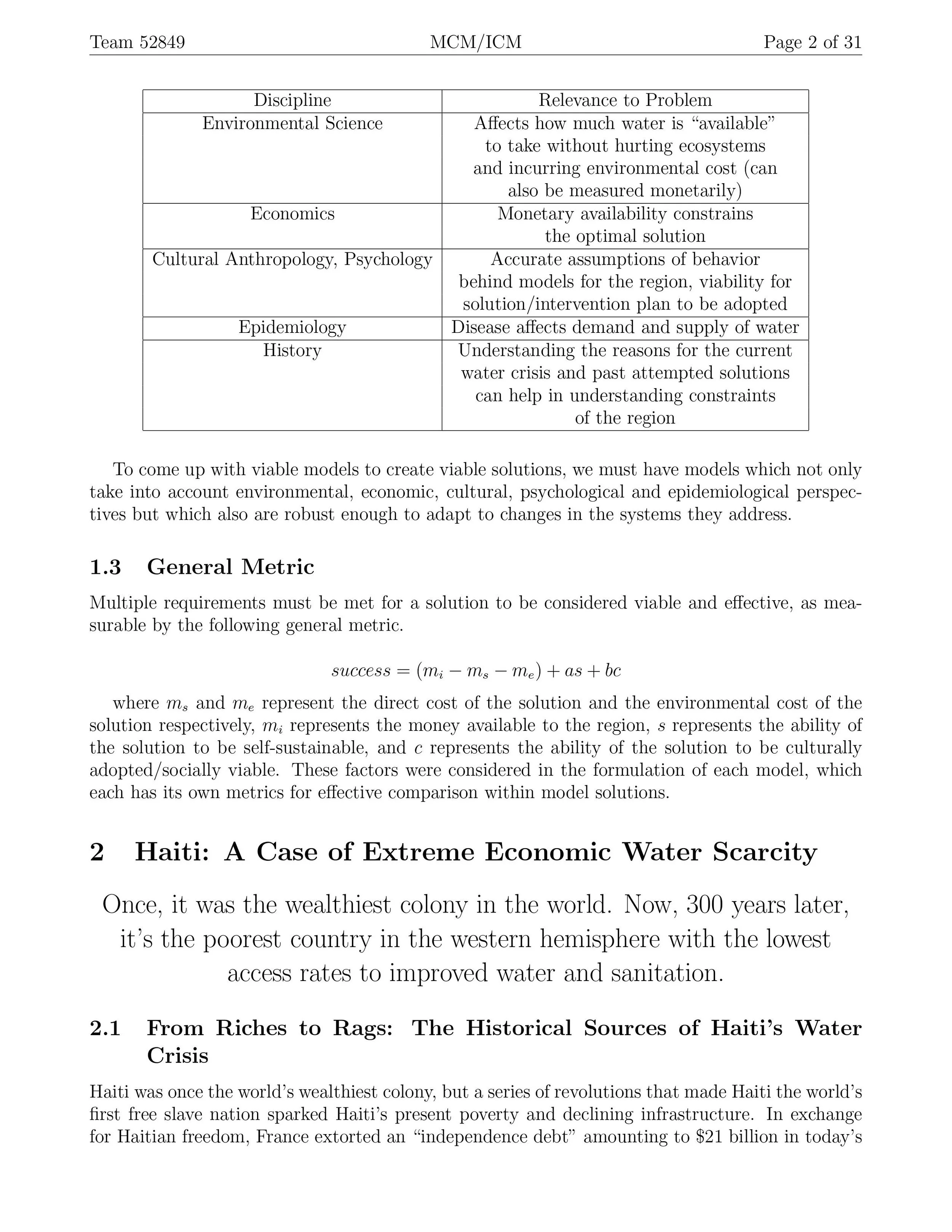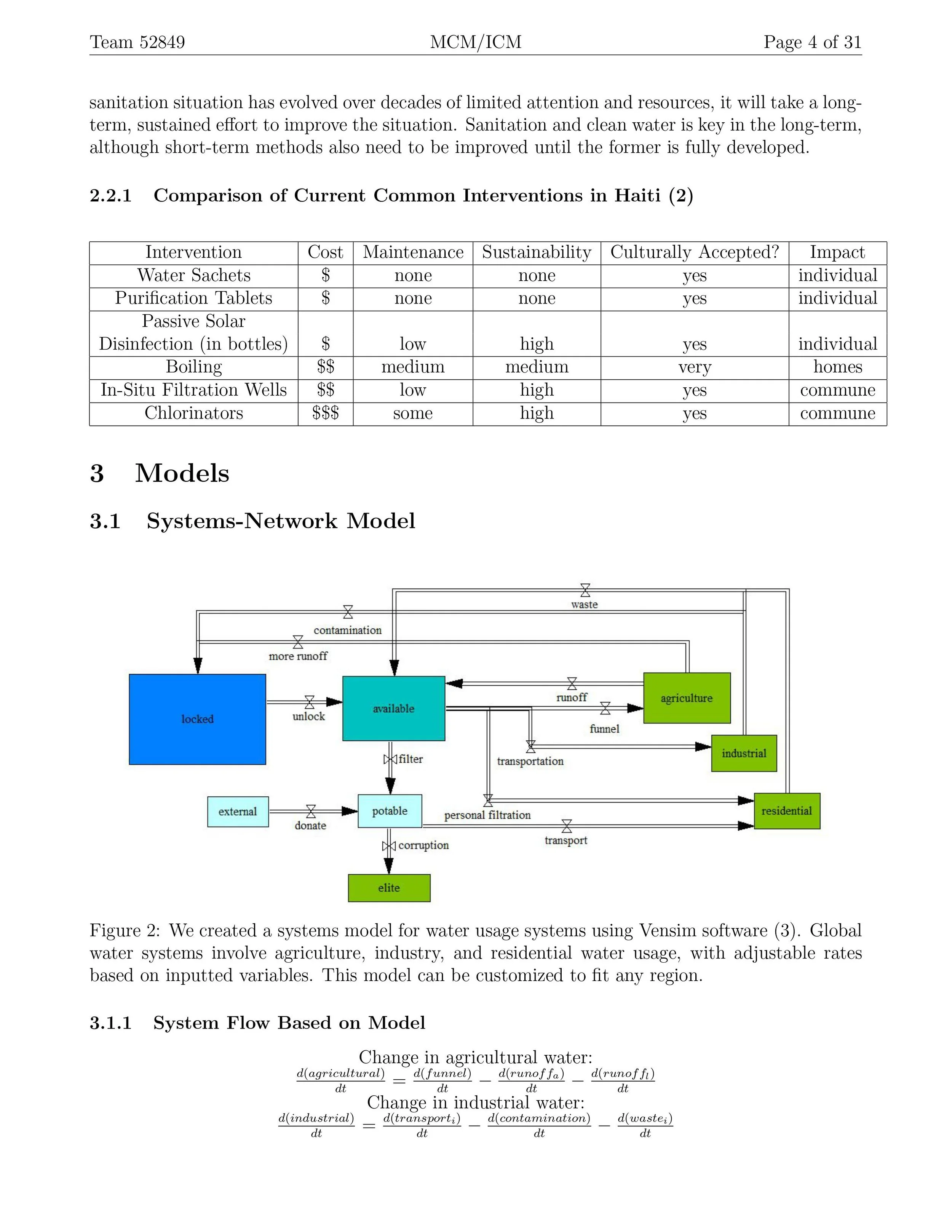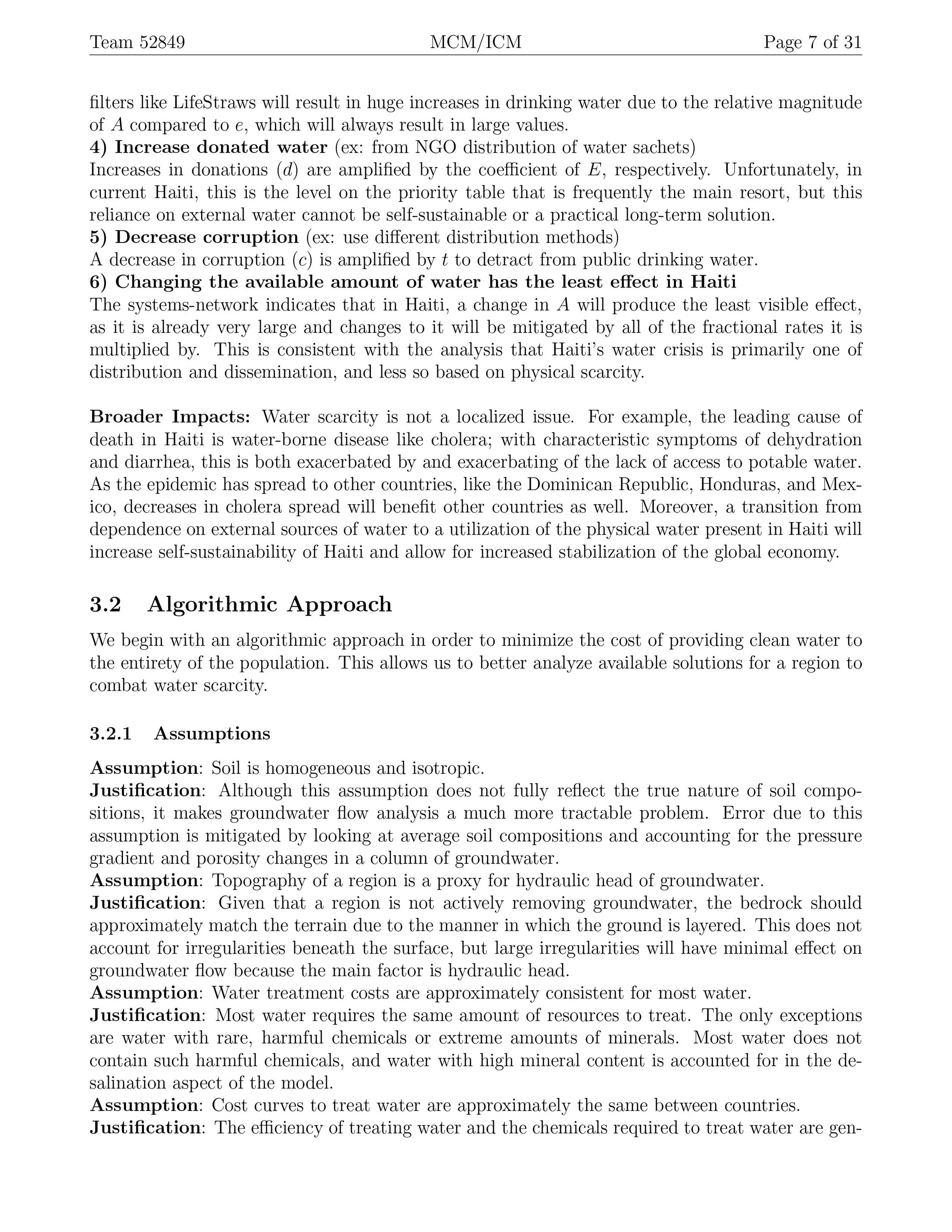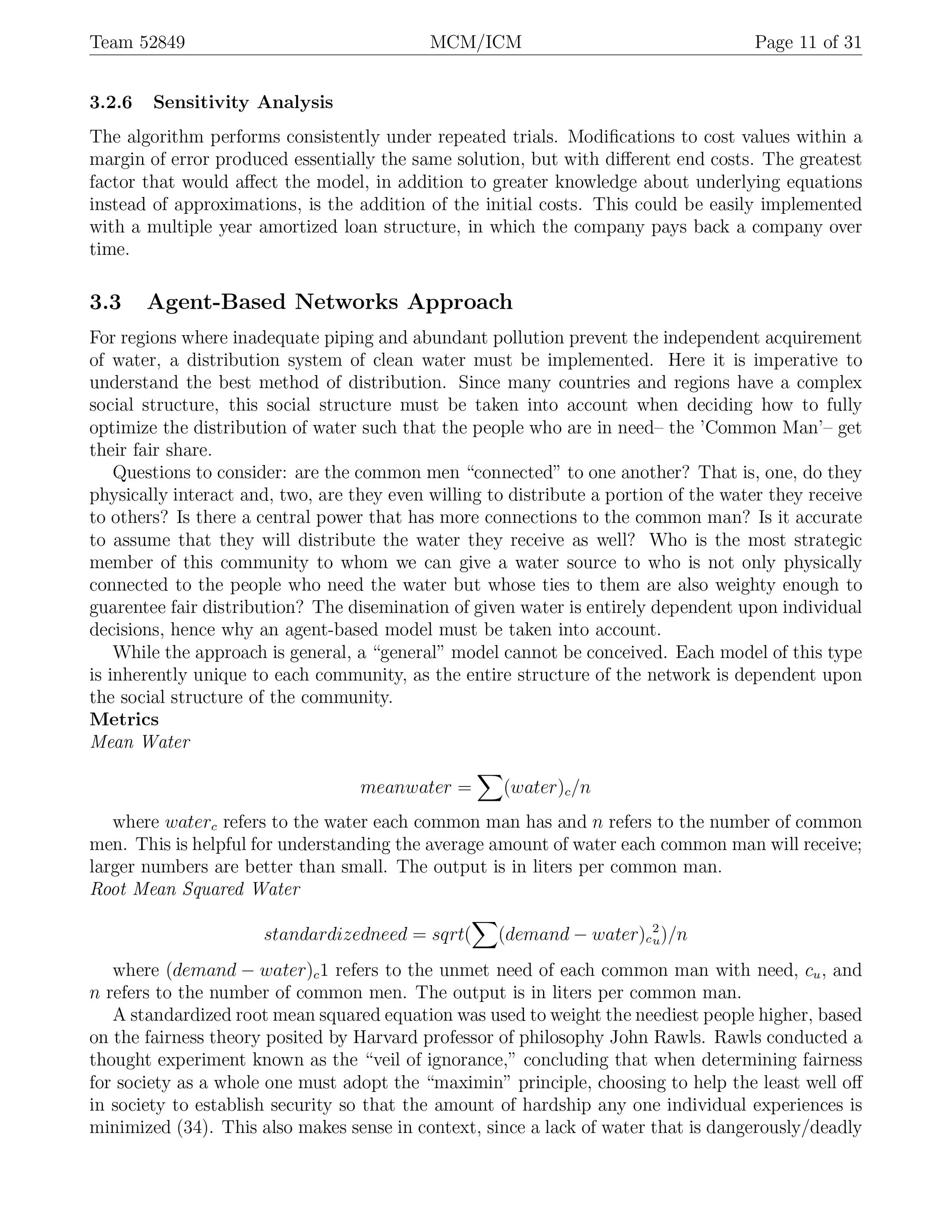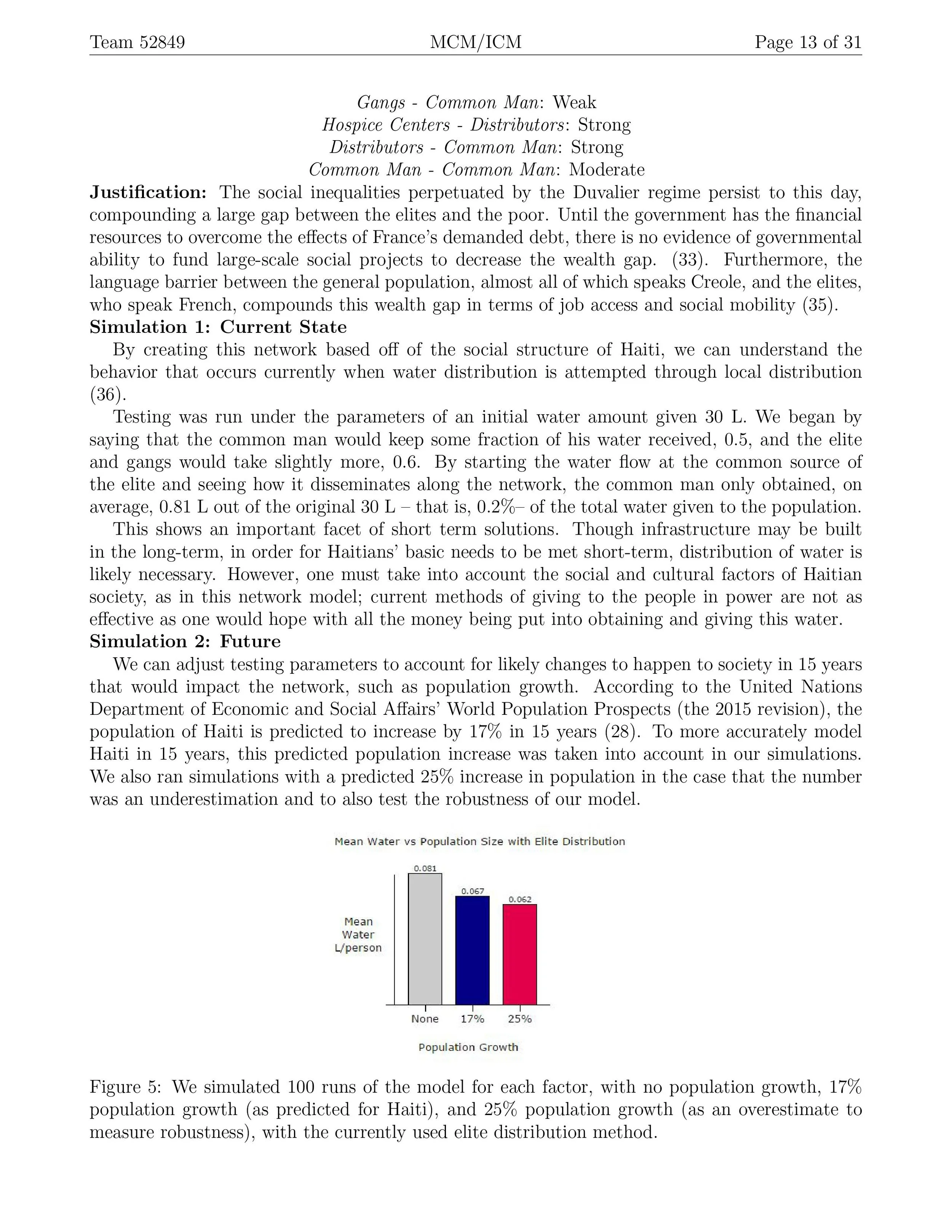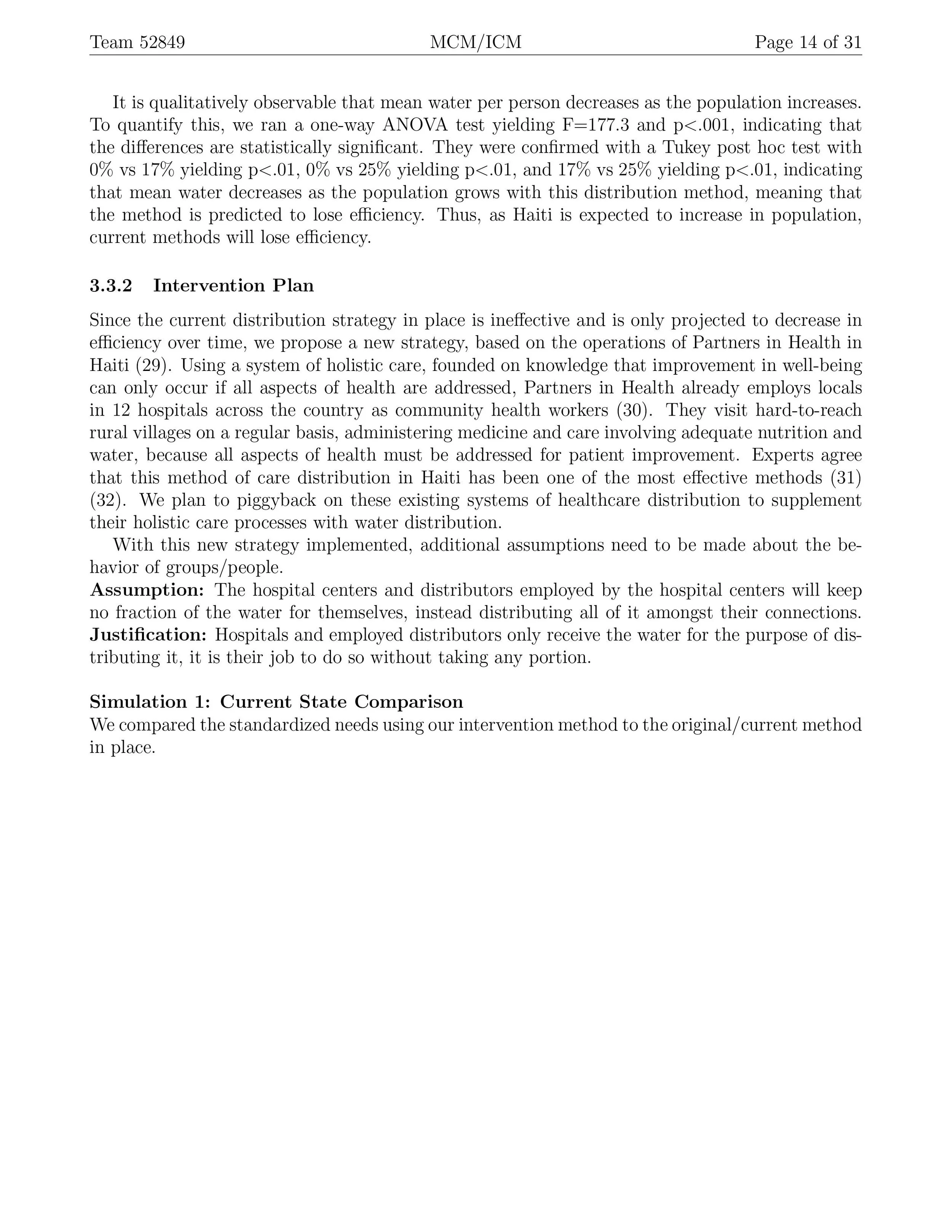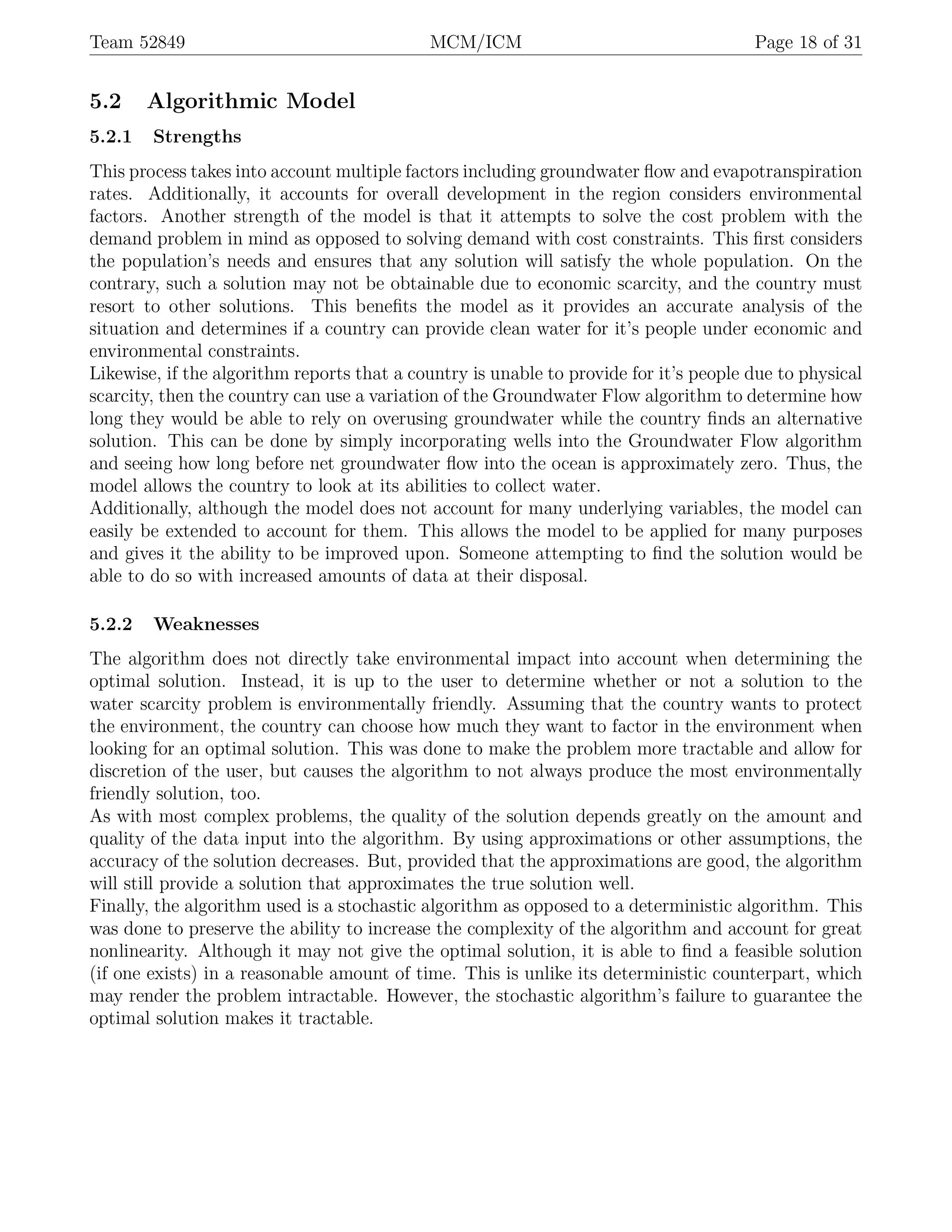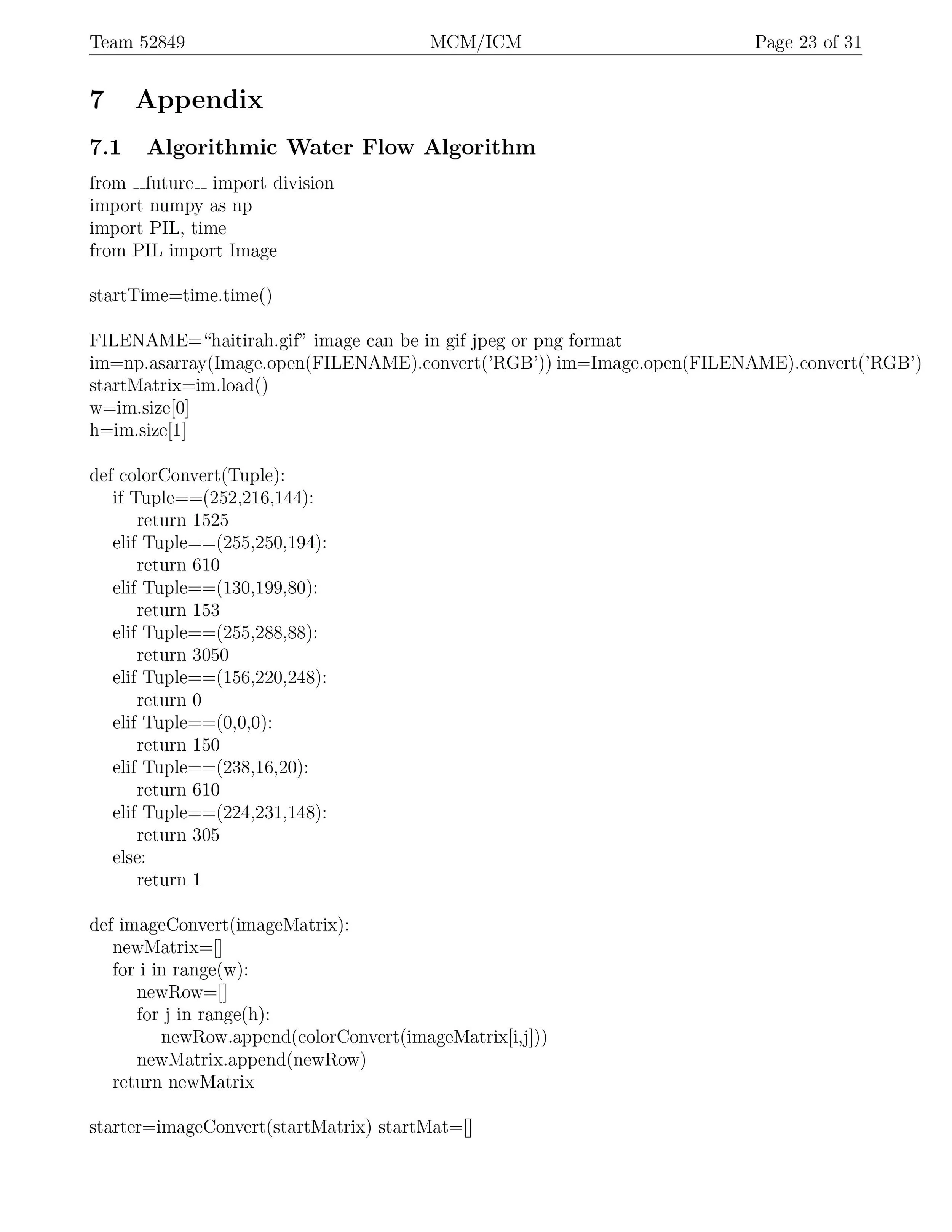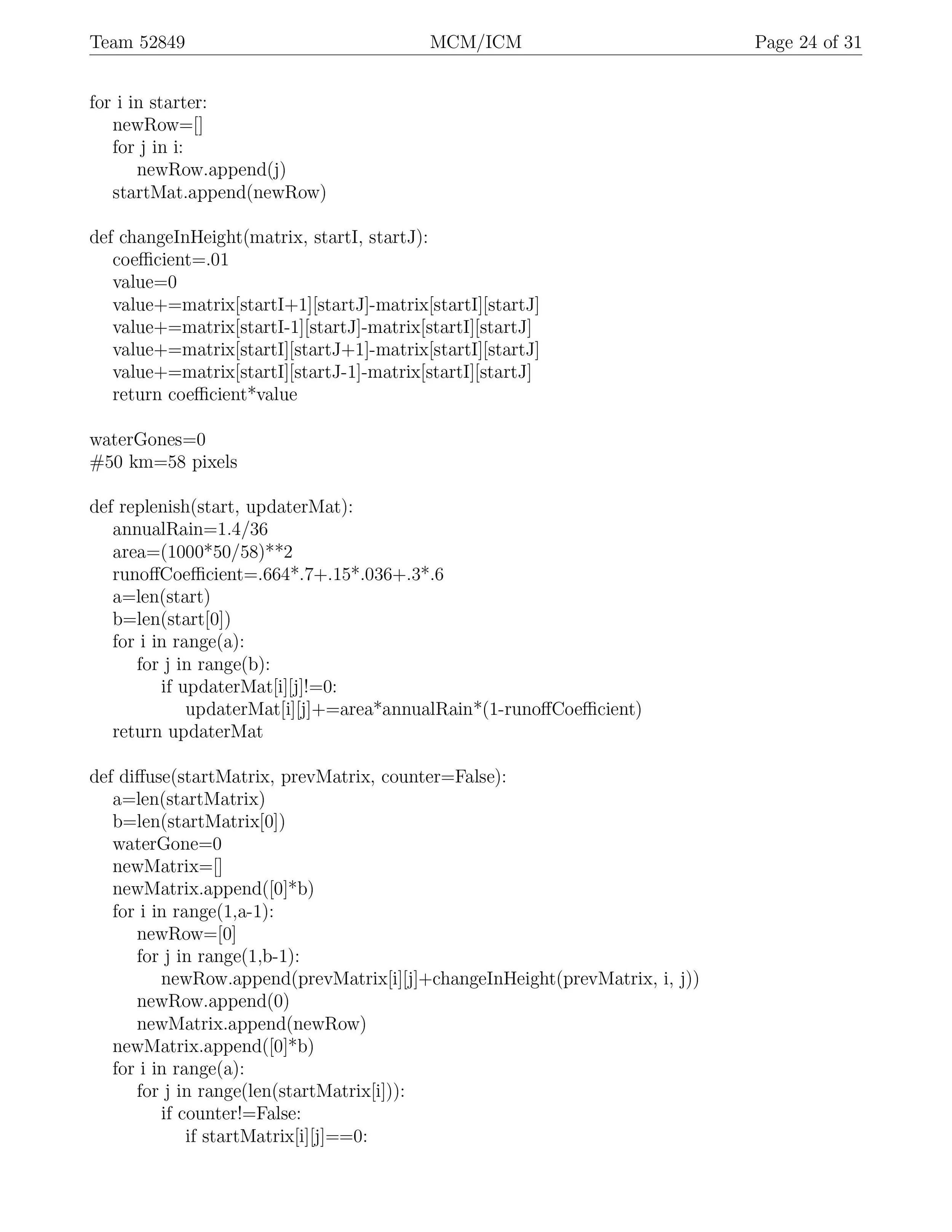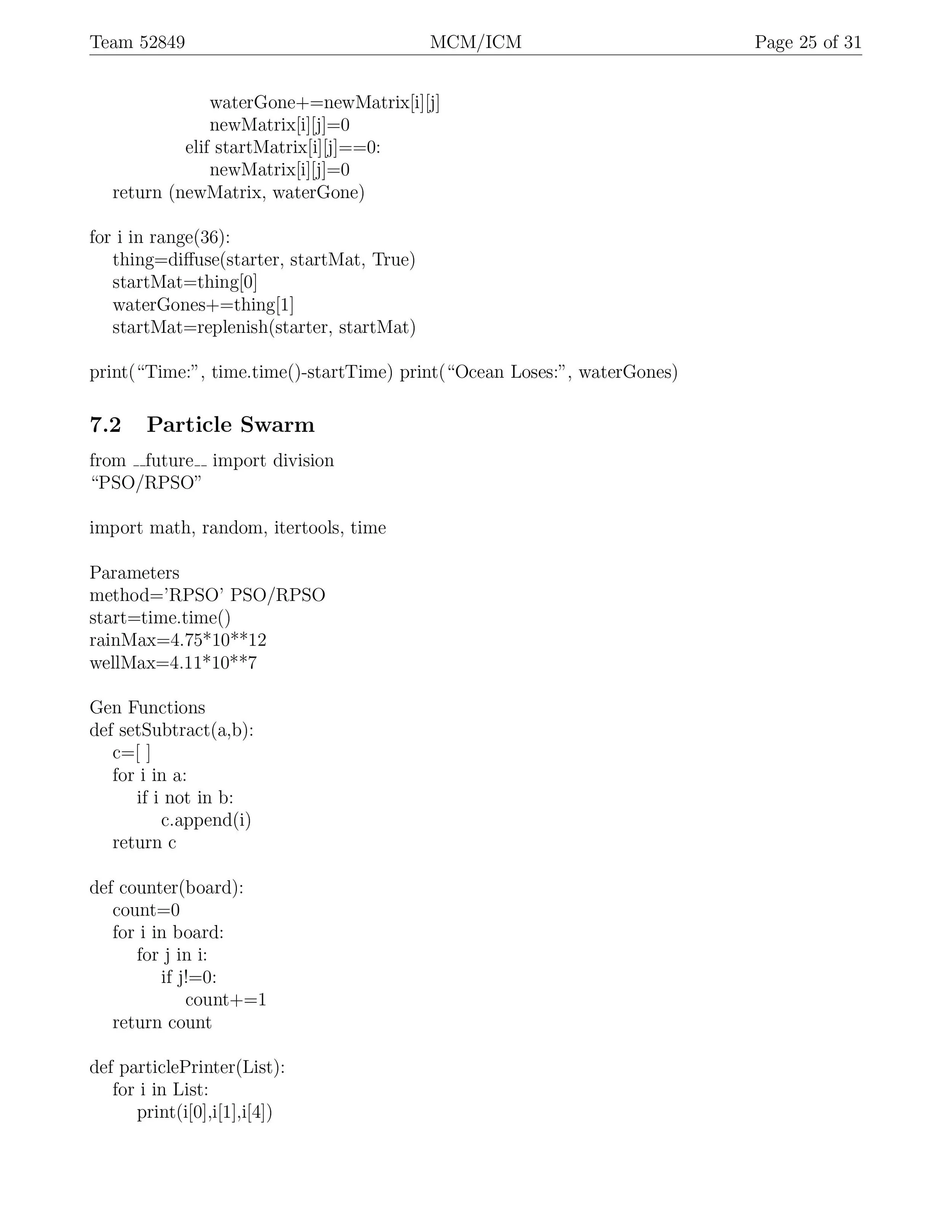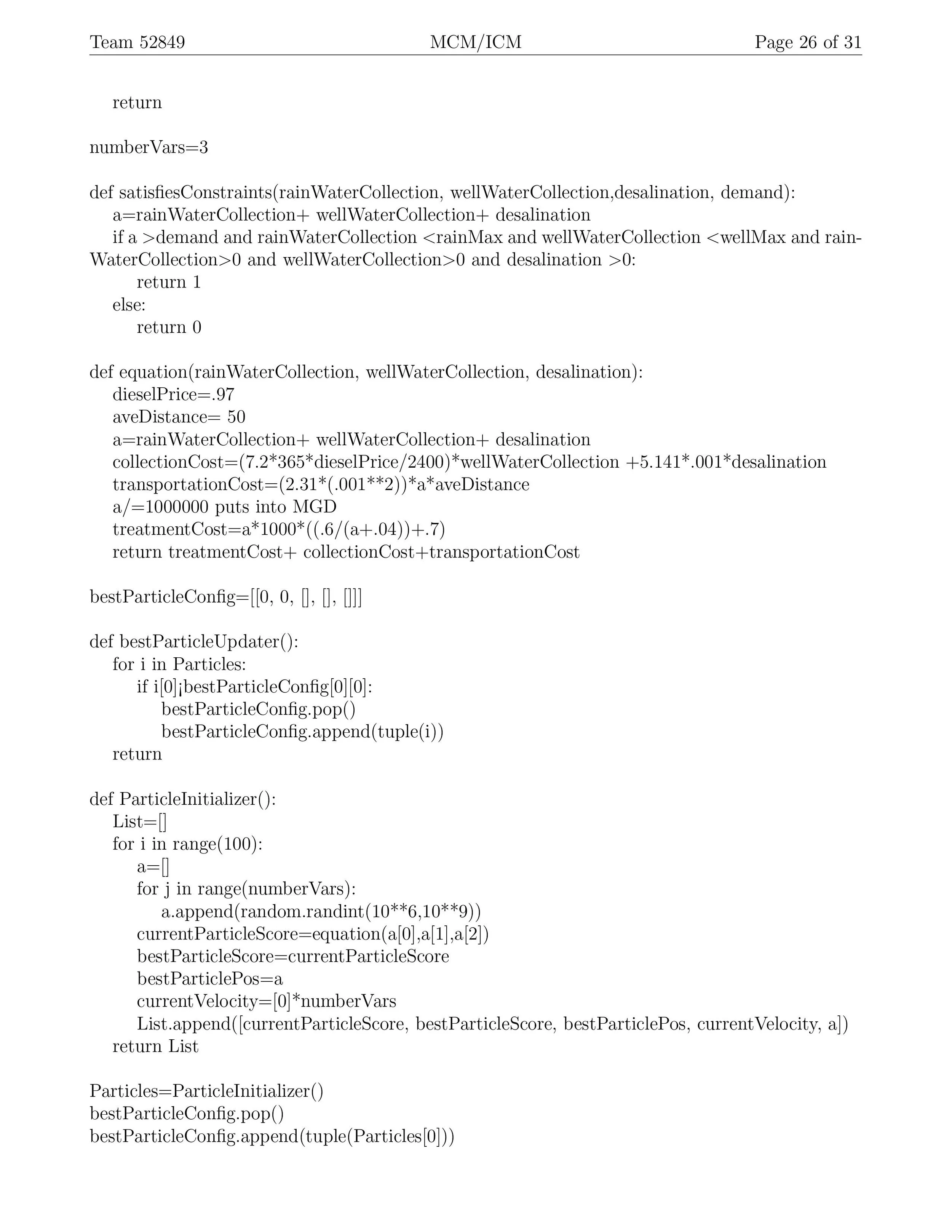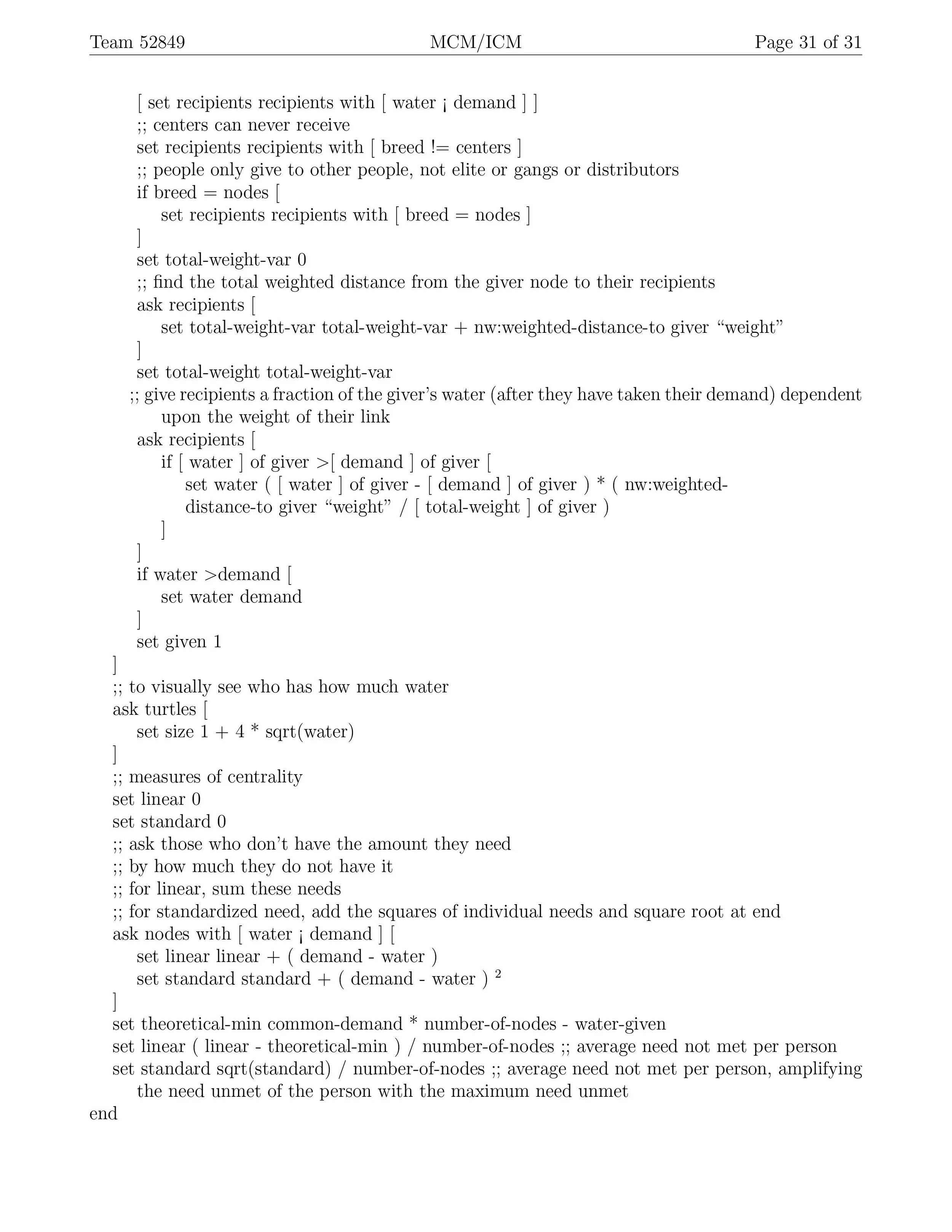Mathematical Contest in Modeling
For our work on an interdisciplinary approach to tackling Haiti’s water crisis, our three-person team was awarded:
Outstanding Team (top 1% of submissions)
INFORMS Award (given to 1 team)
The Outstanding submission by the North Carolina School of Mathematics and Sciences was unlike any other seen by the judges this year. Instead of treating each task as a separate requirement, this team treats the overall problem of water scarcity as a project. The judges appreciated their interesting and very well written submission as well as the effort they demonstrated in tackling the problem of water scarcity by developing three different models which could be applied globally and then demonstrating the model’s output, specifically using Haiti. The team begins their submission with a history of Haiti entitled “Rags to Riches,” as they explain how Haiti went from having it all to having the lowest access rates to improved water and sanitation. This upfront analysis is accompanied by common interventions currently seen in Haiti, analyzed according to the team’s developed metric for a country’s success in delivering needed water to their population. Their metric incorporates economic and environmental costs, as well as the ability to be self-sustainable and socially viable. In each step of their modeling process for all three models, the team motivates the analysis, demonstrates them mathematically, explains them fort he general case, then apply them specifically to Haiti, including detailed reasonable assumptions and justifications. This is followed by a sensitivity analysis. This approach is tremendous and was appreciated by the judges. For the first model, they develop a systems network model, demonstrated in Figure 2, which creates differential equations for each of the six main factors of their model. This characterizes water flow by taking into account different sources of water and all varied uses of water. From there, it is applied to Haiti to understand that both the physical and social infrastructure for transportation and dissemination of potable water need to be highlighted. The team then examines uniquely-tailored intervention strategies for Haiti. Their first effort was to determine an optimal solution to their initial general success metric through particle swarm optimization. Then, they utilized agent-based network modeling to determine the best method for implementing a clean-water distribution system, the most critical of their intervention strategies for Haiti. Finally, the team compared current invention strategies to their proposed innovative solution using both a short- and a long-term planning horizon. Specifically, in the discussion of water scarcity, the judges appreciated the understanding of the problem as a whole. The team looked into the cultural aspects and fairness of wealth and poverty when examining water scarcity and how solutions would be accepted within a society. When applied to Haiti, the team really understood the challenges of a water distribution network in such a nation. The judges appreciated the considerations of control of distribution nodes, presence of NGOs, infectious disease spread, the effectiveness of the government, and the operation of gangs. Overall, this was the most unique modeling the judges had seen, and the incorporation of such tailored innovative solutions was superior. The team from the North Carolina School of Mathematics and Sciences worked hard to convince us that they had good models that worked well for Haiti and could be applied globally.
See our solution below.

